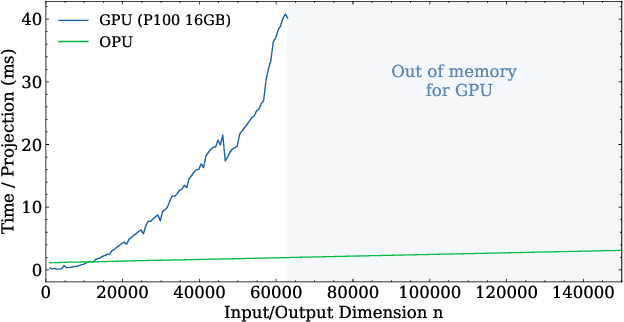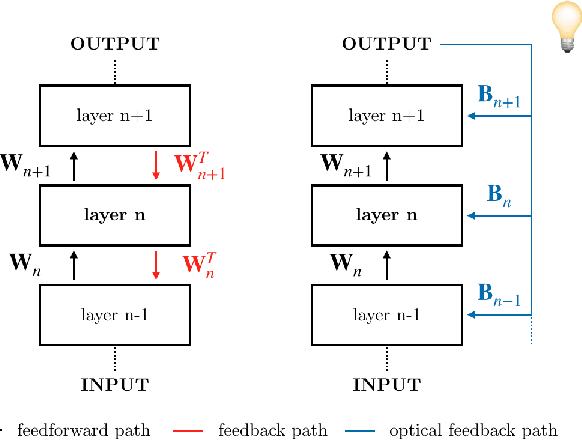Gustave Pariente
Photonic co-processors in HPC: using LightOn OPUs for Randomized Numerical Linear Algebra
May 07, 2021

Abstract:Randomized Numerical Linear Algebra (RandNLA) is a powerful class of methods, widely used in High Performance Computing (HPC). RandNLA provides approximate solutions to linear algebra functions applied to large signals, at reduced computational costs. However, the randomization step for dimensionality reduction may itself become the computational bottleneck on traditional hardware. Leveraging near constant-time linear random projections delivered by LightOn Optical Processing Units we show that randomization can be significantly accelerated, at negligible precision loss, in a wide range of important RandNLA algorithms, such as RandSVD or trace estimators.
Hardware Beyond Backpropagation: a Photonic Co-Processor for Direct Feedback Alignment
Dec 11, 2020


Abstract:The scaling hypothesis motivates the expansion of models past trillions of parameters as a path towards better performance. Recent significant developments, such as GPT-3, have been driven by this conjecture. However, as models scale-up, training them efficiently with backpropagation becomes difficult. Because model, pipeline, and data parallelism distribute parameters and gradients over compute nodes, communication is challenging to orchestrate: this is a bottleneck to further scaling. In this work, we argue that alternative training methods can mitigate these issues, and can inform the design of extreme-scale training hardware. Indeed, using a synaptically asymmetric method with a parallelizable backward pass, such as Direct Feedback Alignement, communication needs are drastically reduced. We present a photonic accelerator for Direct Feedback Alignment, able to compute random projections with trillions of parameters. We demonstrate our system on benchmark tasks, using both fully-connected and graph convolutional networks. Our hardware is the first architecture-agnostic photonic co-processor for training neural networks. This is a significant step towards building scalable hardware, able to go beyond backpropagation, and opening new avenues for deep learning.
 Add to Chrome
Add to Chrome Add to Firefox
Add to Firefox Add to Edge
Add to Edge